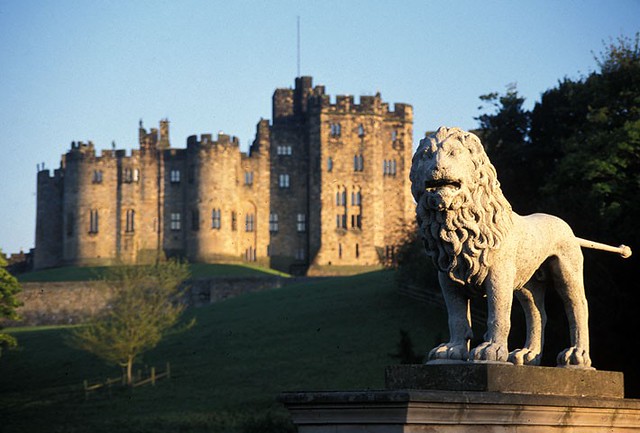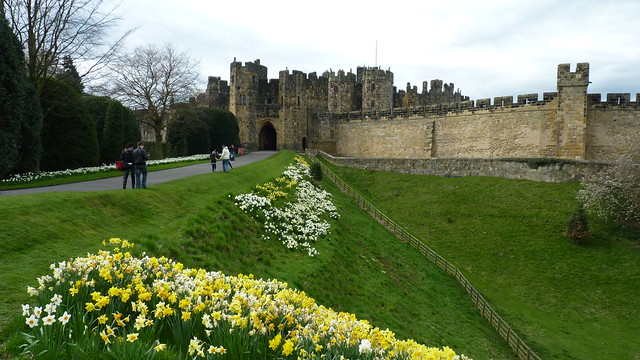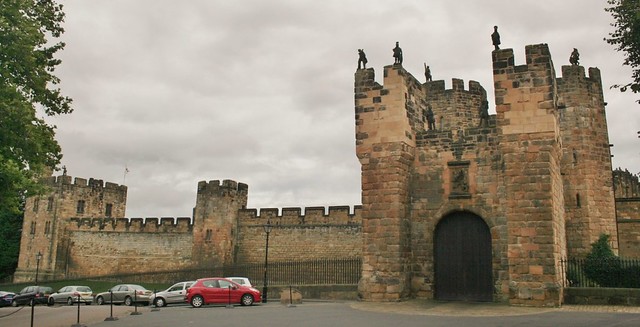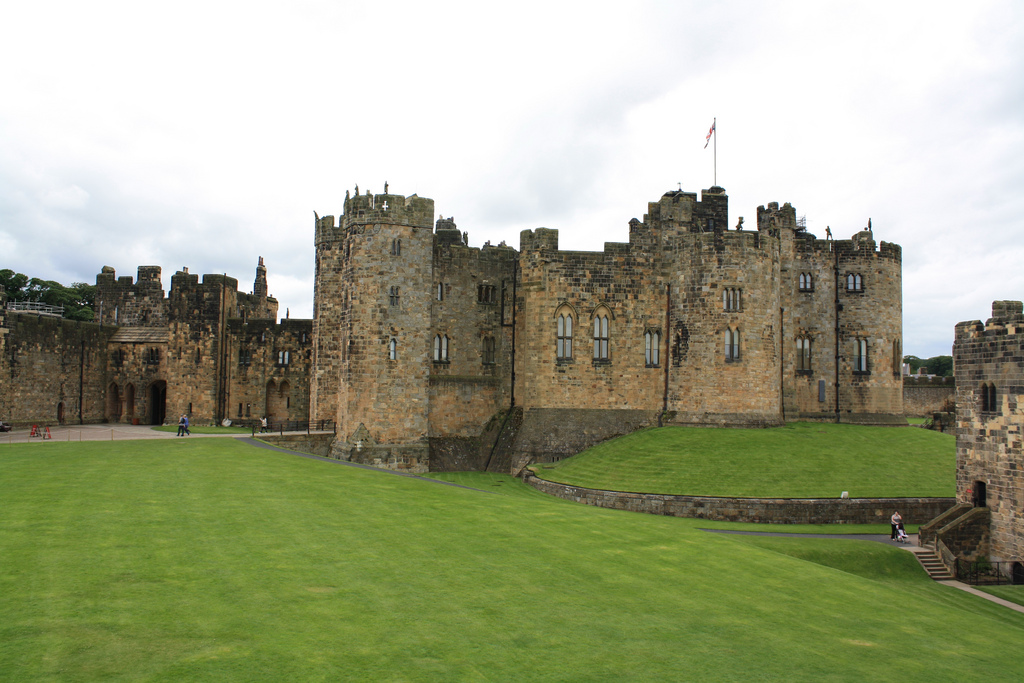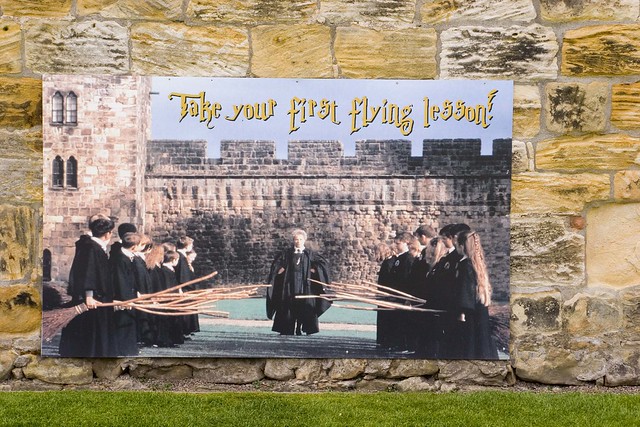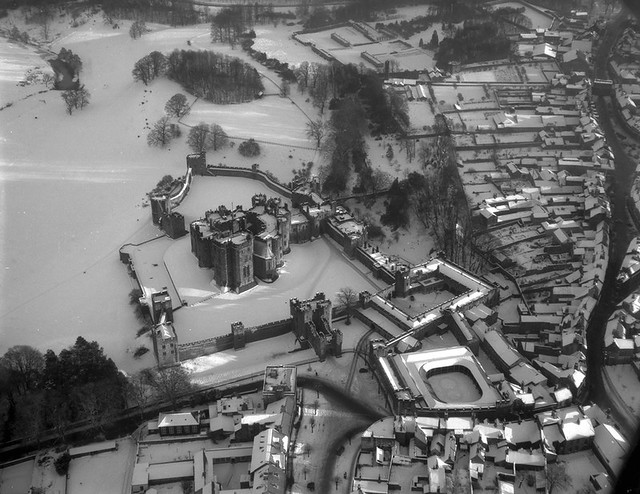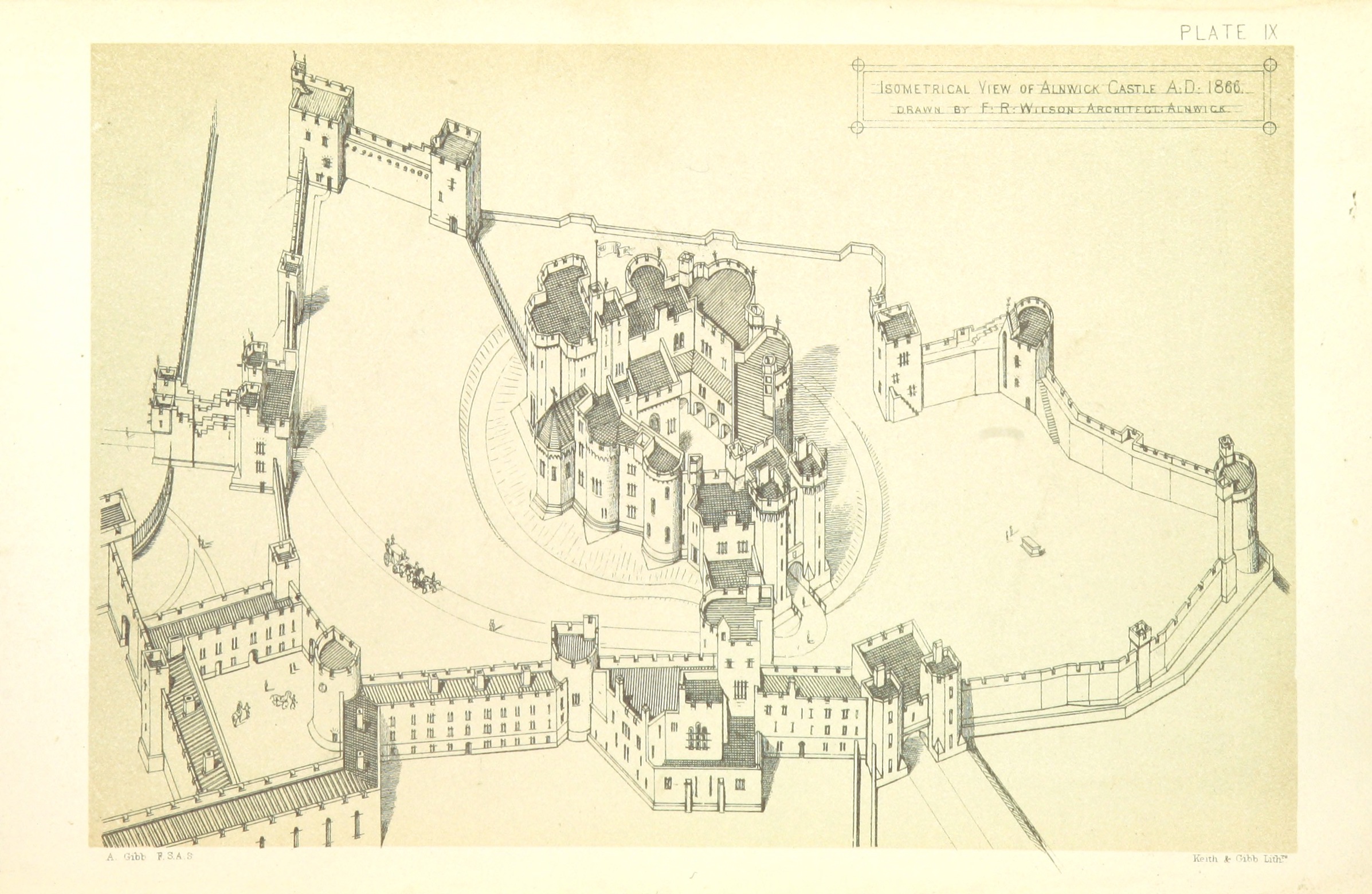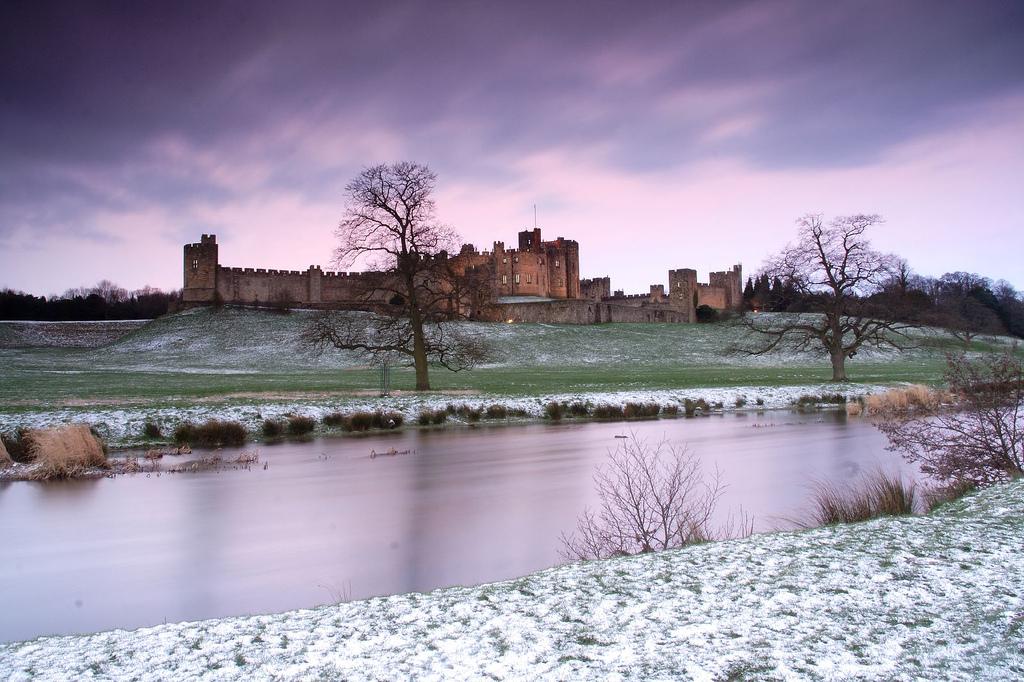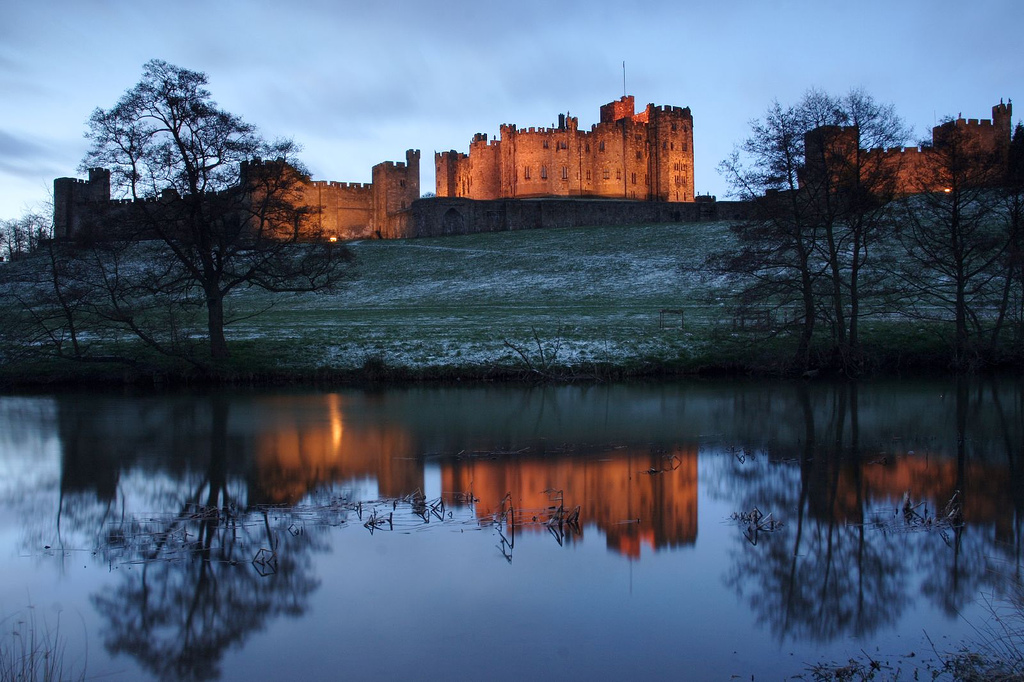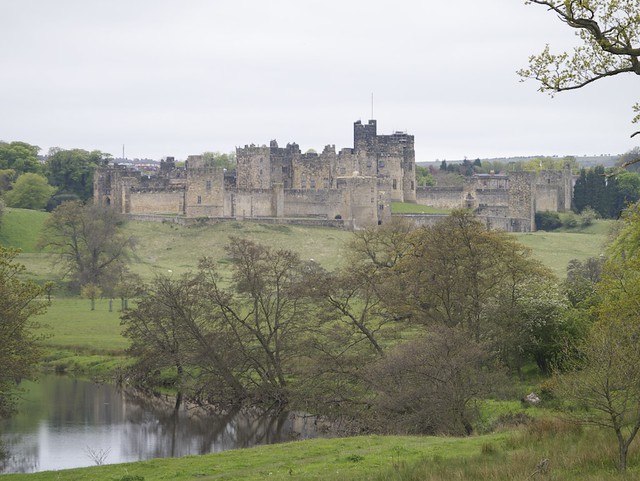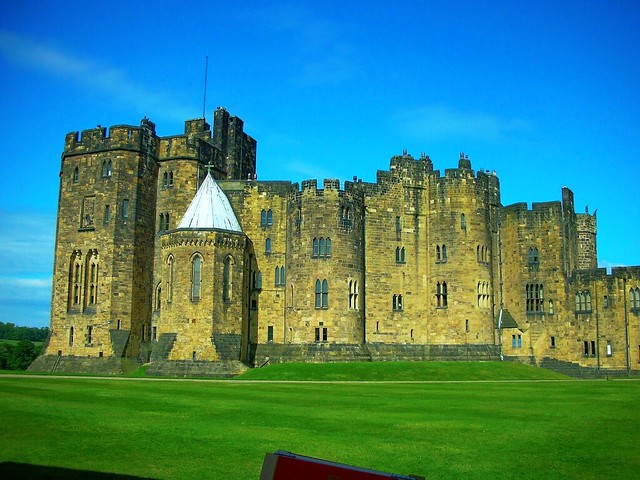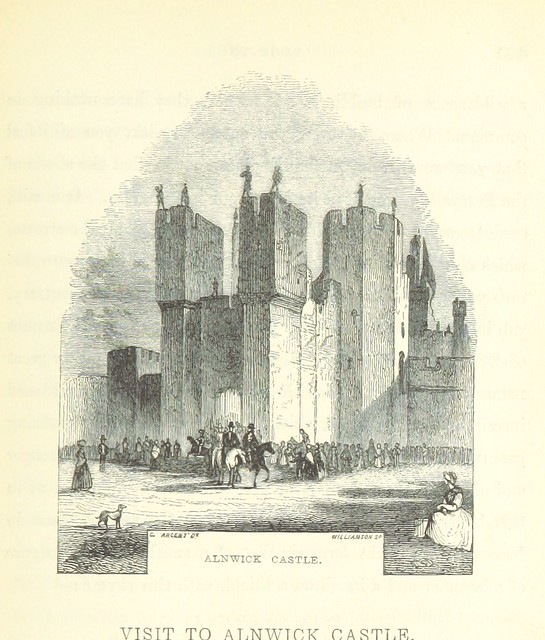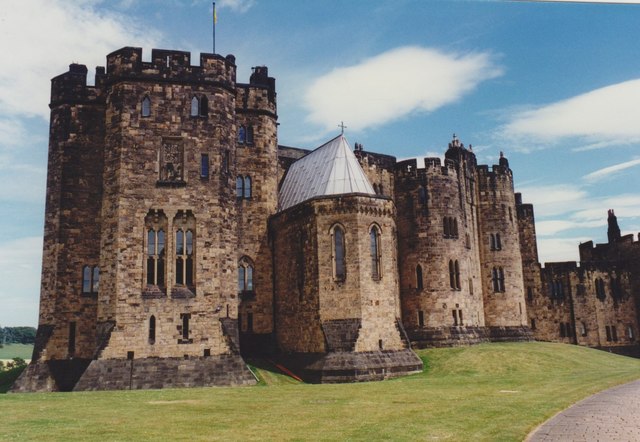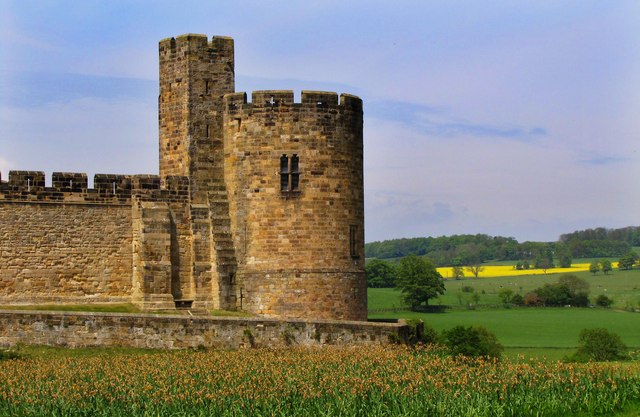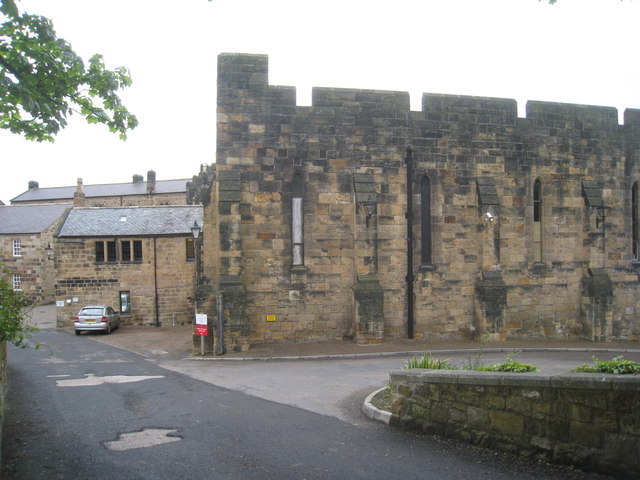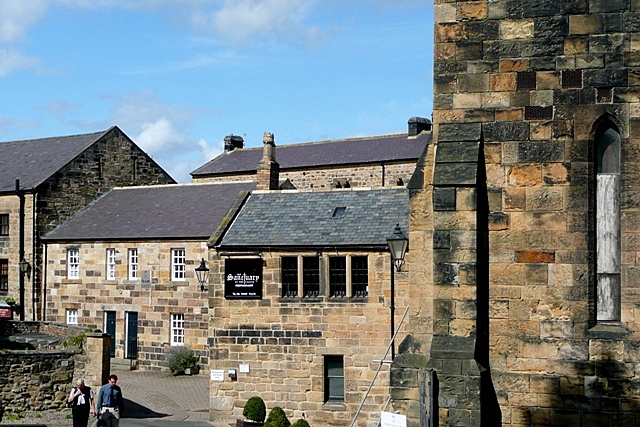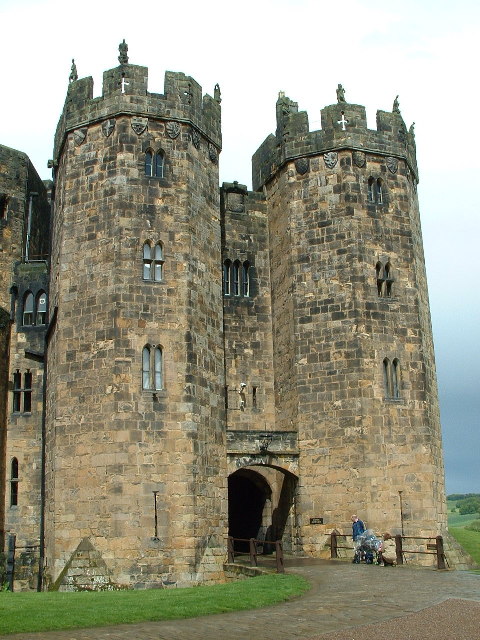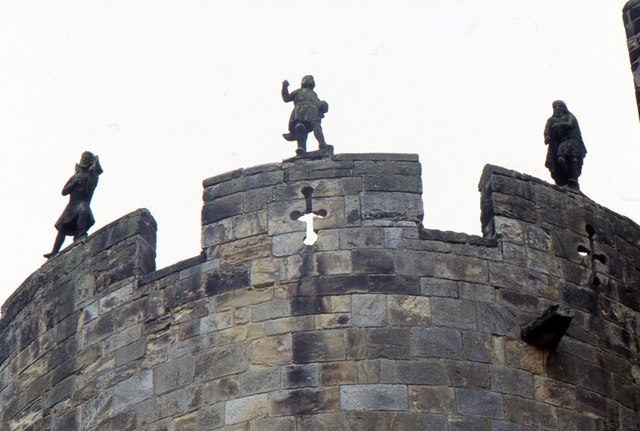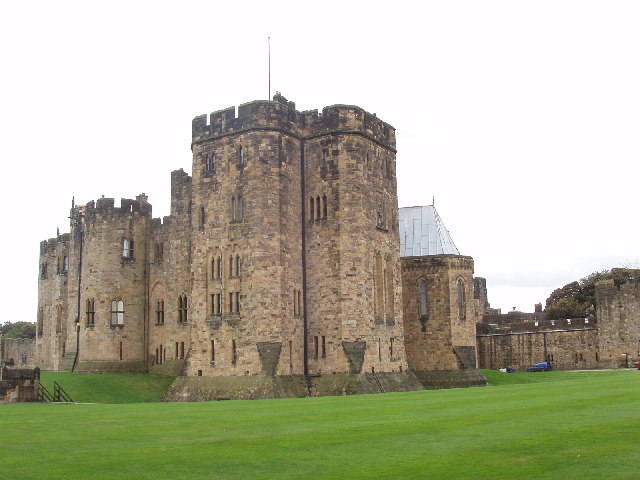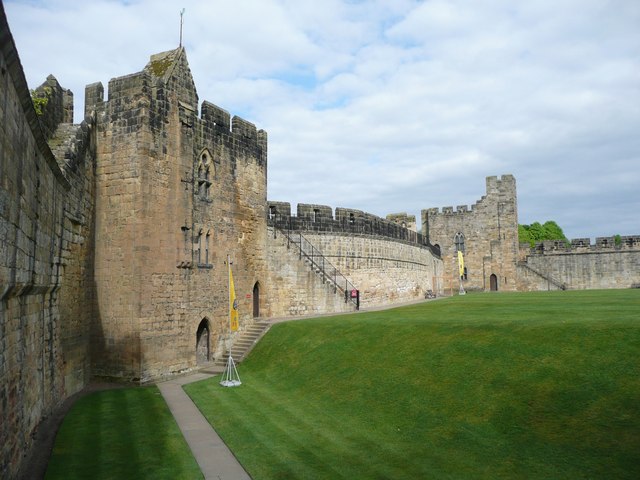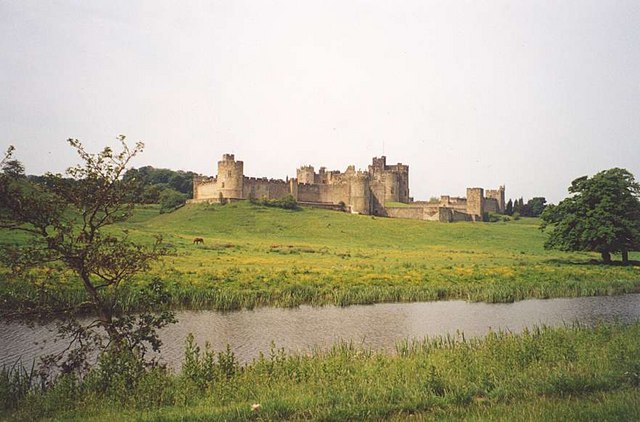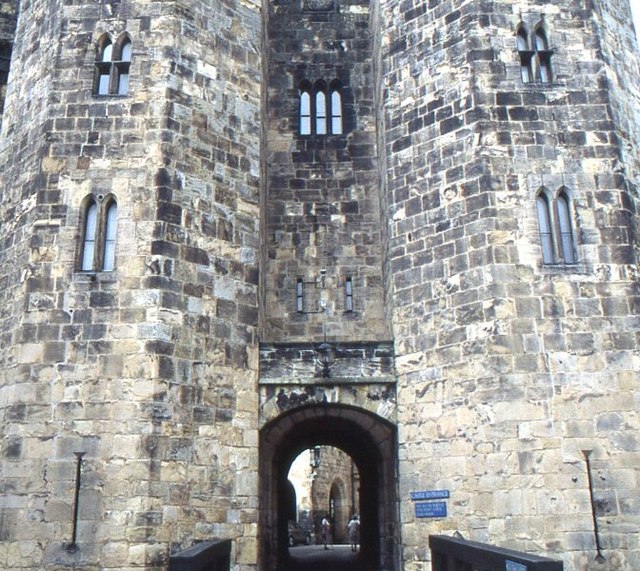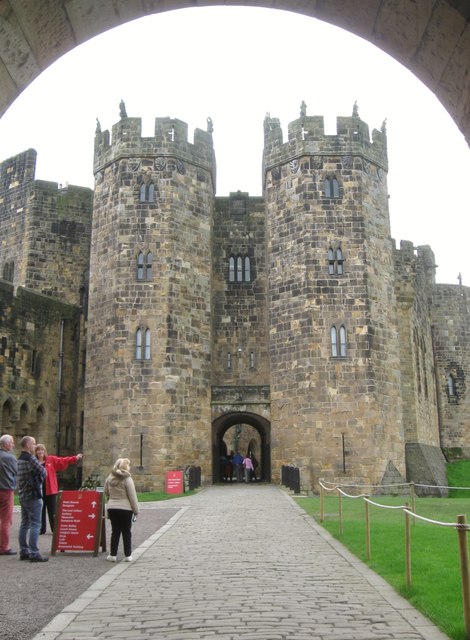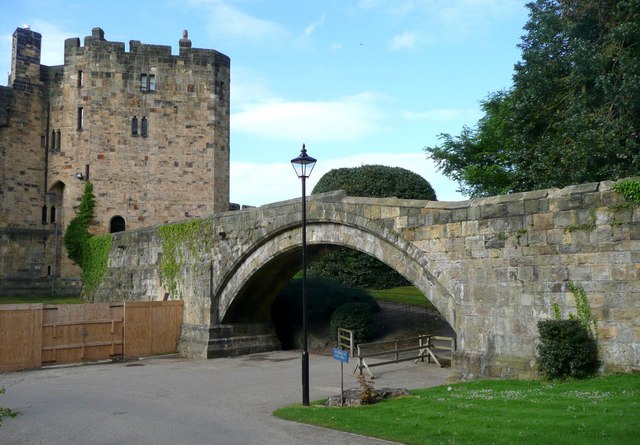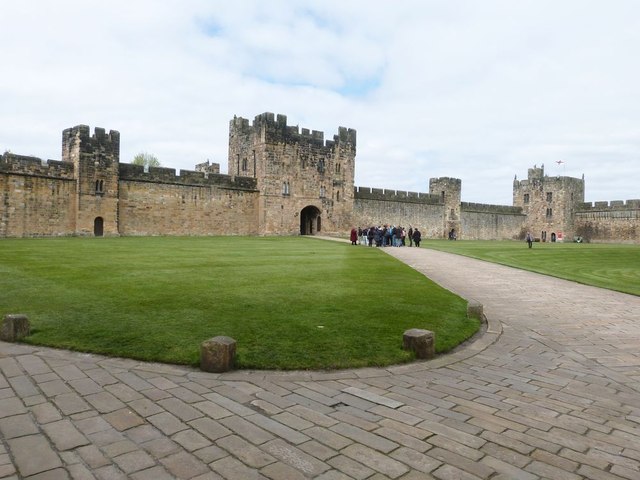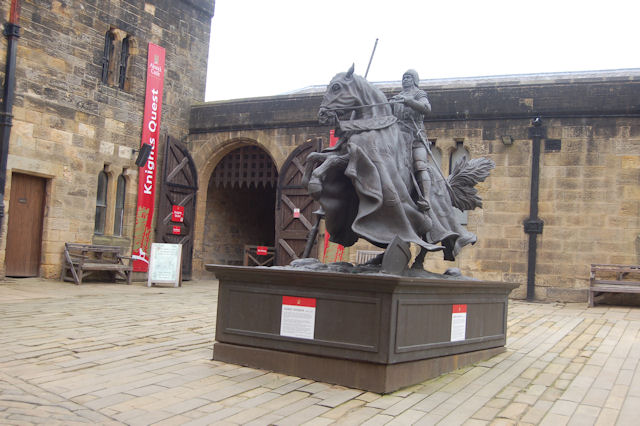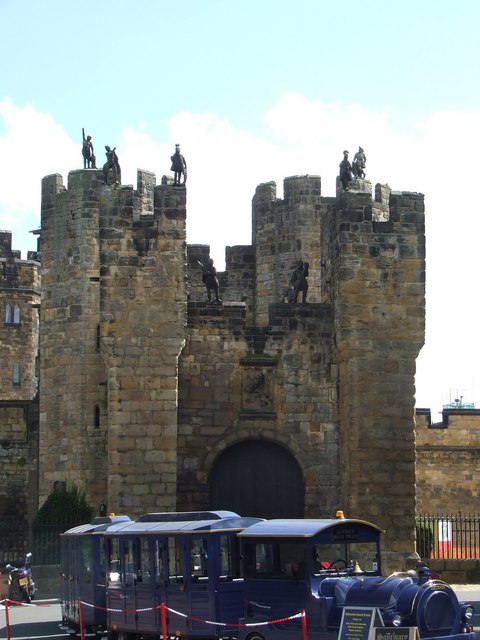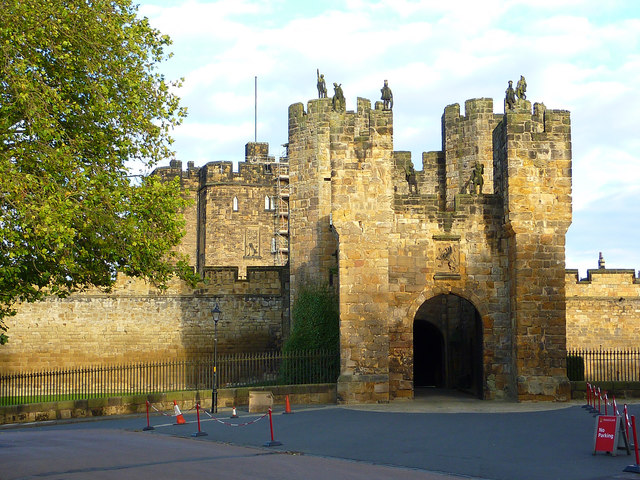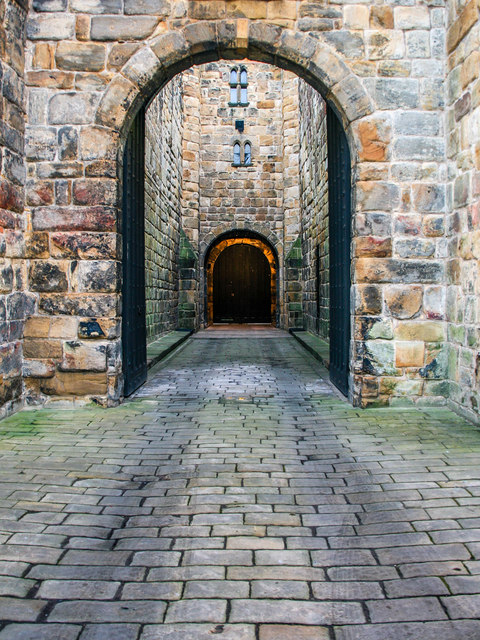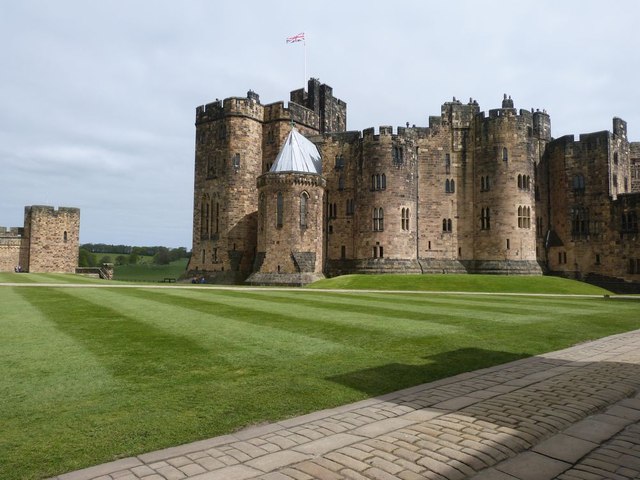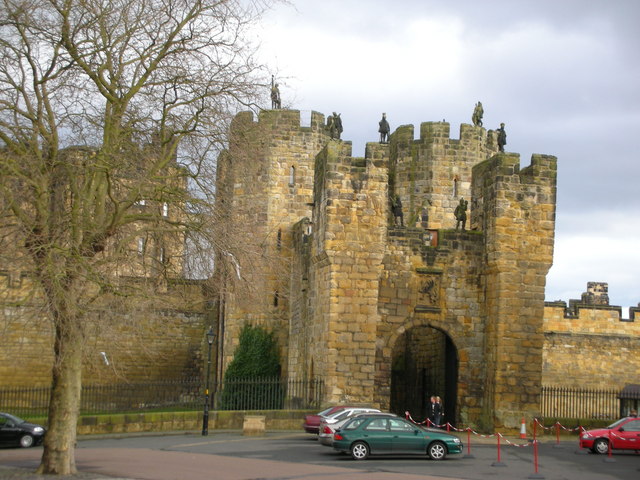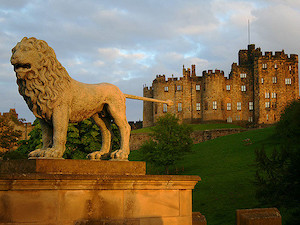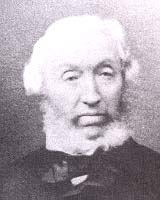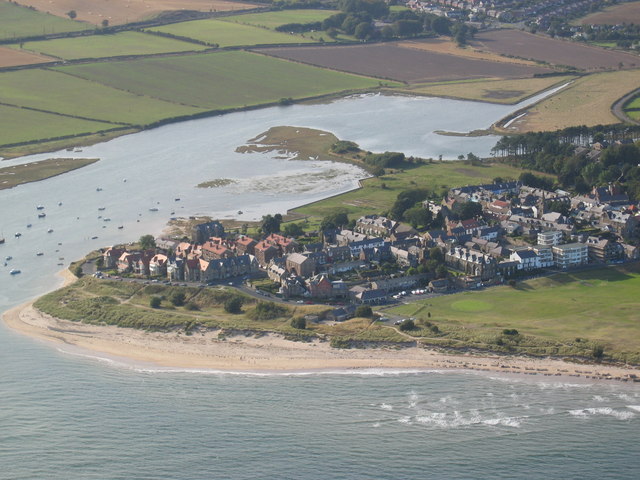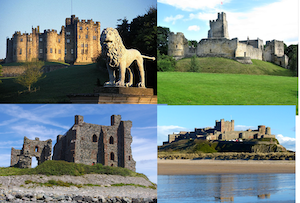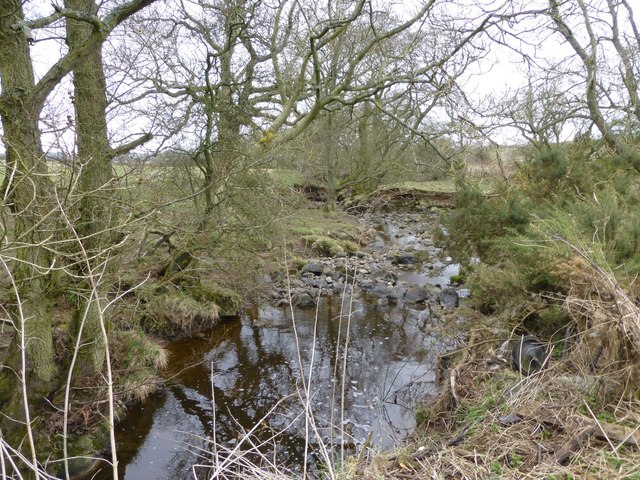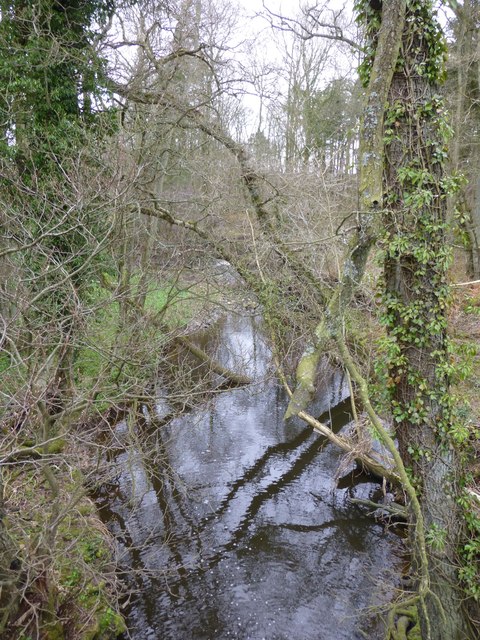Topics > Northumberland > Alnwick > Alnwick Castle
Alnwick Castle
Alnwick Castle guards a road crossing the River Aln. Yves de Vescy, Baron of Alnwick, erected the first parts of the castle in about 1096. The castle was first mentioned in 1136 when it was captured by King David I of Scotland. At this point it was described as "very strong". It was besieged in 1172 and again in 1174 by William the Lion, King of Scotland and William was captured outside the walls during the Battle of Alnwick. Eustace de Vesci, lord of Alnwick, was accused of plotting with Robert Fitzwalter against King John in 1212. In response, John ordered the demolition of Alnwick Castle and Baynard's Castle (the latter was Fitzwalter's stronghold); however, his instructions were not carried out at Alnwick.
When the Vescy family became extinct, Alnwick Castle and the surrounding manor were bequeathed to Antony Bek the Bishop of Durham. The Percy family benefited from England's wars with Scotland; through his military accomplishments Henry Percy, 1st Baron Percy (1273–1314), enhanced his family's status in northern England. In 1309 he purchased the barony of Alnwick from Bek, and it has been owned by the Percy family, the Earls and later Dukes of Northumberland since. The stone castle Henry Percy bought was a modest affair, but he immediately began rebuilding. Though he did not live to see its completion, the building programme turned Alnwick into a major fortress along the Anglo-Scottish border. His son, also called Henry (1299–1352), continued the building. The Abbot's Tower, the Middle Gateway and the Constable's Tower survive from this period. The work at Alnwick Castle balanced military requirements with the family's residential needs. It set the template for castle renovations in the 14th century in northern England; several palace-fortresses, considered "extensive, opulent [and] theatrical" date from this period in the region, such as the castles of Bamburgh and Raby. In 1345 the Percys acquired Warkworth Castle, also in Northumberland. Though Alnwick was considered more prestigious, Warkworth became the family's preferred residence.
The Percy family were powerful lords in northern England. Henry Percy, 1st Earl of Northumberland (1341–1408), rebelled against King Richard II and helped dethrone him. The earl later rebelled against King Henry IV and after defeating the earl in the Battle of Shrewsbury, the king chased him north to Alnwick. The castle surrendered under the threat of bombardment in 1403.
During the Wars of the Roses, castles were infrequently engaged in battle and conflict was generally based around combat in the field. Alnwick was one of three castles held by Lancastrian forces in 1461 and 1462, and it was there that the "only practical defence of a private castle" was made according to military historian D. J. Cathcart King. It was held against King Edward until its surrender in mid-September 1461 after the Battle of Towton. Re-captured by Sir William Tailboys, during the winter it was surrendered by him to Hastings, Sir John Howard and Sir Ralph Grey of Heton in late July 1462. Grey was appointed captain but surrendered after a sharp siege in the early autumn. King Edward responded with vigour and when the Earl of Warwick arrived in November Queen Margaret and her French advisor, Pierre de Brézé were forced to sail to Scotland for help. They organised a mainly Scots relief force which, under George Douglas, 4th Earl of Angus and de Brézé, set out on 22 November. Warwick's army, commanded by the experienced Earl of Kent and the recently pardoned Lord Scales, prevented news getting through to the starving garrisons. As a result the nearby Bamburgh and Dunstanburgh castles soon agreed terms and surrendered. But Hungerford and Whittingham held Alnwick until Warwick was forced to withdraw when de Breze and Angus arrived on 5 January 1463.
The Lancastrians missed a chance to bring Warwick to battle instead being content to retire, leaving behind only a token force which surrendered next day.
By May 1463 Alnwick was in Lancastrian hands for the third time since Towton, betrayed by Grey of Heton who tricked the commander, Sir John Astley. Astley was imprisoned and Hungerford resumed command.
After Montagu's triumphs at Hedgeley Moor and Hexham in 1464 Warwick arrived before Alnwick on 23 June and received its surrender next day.
After the execution of Thomas Percy, 7th Earl of Northumberland, in 1572 Alnwick castle was uninhabited. In the second half of the 18th century Robert Adam carried out many alterations. The interiors were largely in a Strawberry Hill gothic style not at all typical of his work, which was usually neoclassical.
However in the 19th century Algernon, 4th Duke of Northumberland replaced much of Adam's architecture. Instead he paid Anthony Salvin £250,000 between 1854 and 1865 to remove the Gothic additions and other architectural work. Salvin is mostly responsible for the kitchen, the Prudhoe Tower, the palatial accommodation, and the layout of the inner ward. According to the official website a large amount of Adam's work survives, but little or none of it remains in the principal rooms shown to the public, which were redecorated in an opulent Italianate style in the Victorian era by Luigi Canina.
Visit the page: Alnwick Castle for references and further details. You can contribute to this article on Wikipedia.
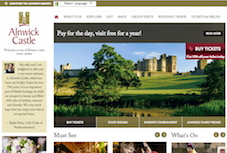
from http://www.alnwickcastle.com/
Alnwick Castle - Official Website
- The Website includes visitor information, details of exhibitions and collections.
"...Welcome to Alnwick Castle, which has been my family's home for over 700 years. - Ralph Percy, 12th Duke of …
Added by
Simon Cotterill

from Youtube (youtube)
Duke And Duchess At Garden Fete Aka Duke And Duchess Of Northumberland (1922)
Pinned by Simon Cotterill
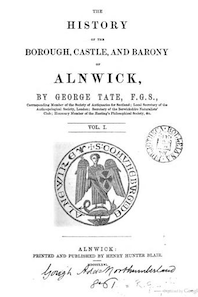
from http://books.google.co.uk/boo…
The history of the borough, castle, and barony of Alnwick, Volume 1. George Tate, 1866
- Free eBook digitised by Google
Added by
Simon Cotterill

from https://commons.wikimedia.org…
J.M.W. Turner - Alnwick Castle
- Watercolour circa 1829
Added by
Simon Cotterill

from https://commons.wikimedia.org…
Chromolithograph of Alnwick Castle, 1870
- From the book County Seats of The Noblemen and Gentlemen of Great Britain and Ireland, Alexander Francis Lydon (1836-1917)
Added by
Simon Cotterill

from https://commons.wikimedia.org…
An 18th-century painting of Alnwick Castle by Canaletto
- An 18th-century painting of Alnwick Castle by Canaletto. According to the Bridgeman Art Library, the medium is unknown and the picture is in a private collection.
Added by
Simon Cotterill

from https://commons.wikimedia.org…
Isometric View of Alnwick Castle, 1866
- From the book The history of the borough, castle, and barony of Alnwick (1866), by George Tate
Added by
Simon Cotterill

from https://www.historicengland.o…
ALNWICK CASTLE, THE CASTLE, STABLE COURT AND COVERED RIDING SCHOOL INCLUDING WEST WALL OF RIDING SCHOOL
- "Alnwick Castle has work of every period on the line of the original motte and bailey plan. By 1138 a strong stone built border castle with a shell keep in …
Added by
Simon Cotterill

from Flickr (flickr)
Image taken from page 354 of 'The History of the Borough, Castle, and Barony of Alnwick. [With illustrations.]'
Pinned by Simon Cotterill
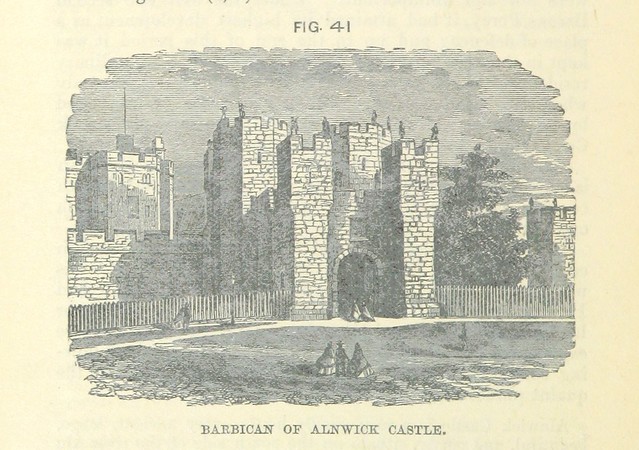
from Flickr (flickr)
Image taken from page 286 of 'The History of the Borough, Castle, and Barony of Alnwick. [With illustrations.]'
Pinned by Simon Cotterill
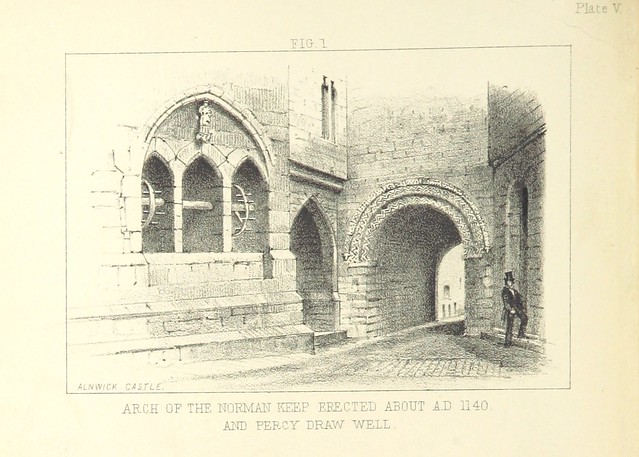
from Flickr (flickr)
Image taken from page 110 of 'The History of the Borough, Castle, and Barony of Alnwick. [With illustrations.]'
Pinned by Simon Cotterill

from Youtube (youtube)
DJI Mavic Pro Drone in Northumberland. Harry Potters Castle too. Alnwick and Alnmouth
Pinned by Simon Cotterill

Co-Curate Page
Alnwick Castle, description
- Extract from: History, Topography, and Directory of Northumberland...Whellan, William, & Co, 1855. < Alnwick Parish ALNWICK CASTLE ALNWICK CASTLE, one of the principal seats of the noble family of …


from http://www.alnwickcastle.com/
Alnwick Castle - Official Website
- The Website includes visitor information, details of exhibitions and collections.
"...Welcome to Alnwick Castle, which has been my family's home for over 700 years. - Ralph Percy, 12th Duke of …
Added by
Simon Cotterill

from Youtube (youtube)
Duke And Duchess At Garden Fete Aka Duke And Duchess Of Northumberland (1922)
Pinned by Simon Cotterill

from http://books.google.co.uk/boo…
The history of the borough, castle, and barony of Alnwick, Volume 1. George Tate, 1866
- Free eBook digitised by Google
Added by
Simon Cotterill

from https://commons.wikimedia.org…
J.M.W. Turner - Alnwick Castle
- Watercolour circa 1829
Added by
Simon Cotterill

from https://commons.wikimedia.org…
Chromolithograph of Alnwick Castle, 1870
- From the book County Seats of The Noblemen and Gentlemen of Great Britain and Ireland, Alexander Francis Lydon (1836-1917)
Added by
Simon Cotterill

from https://commons.wikimedia.org…
An 18th-century painting of Alnwick Castle by Canaletto
- An 18th-century painting of Alnwick Castle by Canaletto. According to the Bridgeman Art Library, the medium is unknown and the picture is in a private collection.
Added by
Simon Cotterill

from https://commons.wikimedia.org…
Isometric View of Alnwick Castle, 1866
- From the book The history of the borough, castle, and barony of Alnwick (1866), by George Tate
Added by
Simon Cotterill

from https://www.historicengland.o…
ALNWICK CASTLE, THE CASTLE, STABLE COURT AND COVERED RIDING SCHOOL INCLUDING WEST WALL OF RIDING SCHOOL
- "Alnwick Castle has work of every period on the line of the original motte and bailey plan. By 1138 a strong stone built border castle with a shell keep in …
Added by
Simon Cotterill

from Flickr (flickr)
Image taken from page 354 of 'The History of the Borough, Castle, and Barony of Alnwick. [With illustrations.]'
Pinned by Simon Cotterill

from Flickr (flickr)
Image taken from page 286 of 'The History of the Borough, Castle, and Barony of Alnwick. [With illustrations.]'
Pinned by Simon Cotterill

from Flickr (flickr)
Image taken from page 110 of 'The History of the Borough, Castle, and Barony of Alnwick. [With illustrations.]'
Pinned by Simon Cotterill

from Youtube (youtube)
DJI Mavic Pro Drone in Northumberland. Harry Potters Castle too. Alnwick and Alnmouth
Pinned by Simon Cotterill

Co-Curate Page
Alnwick Castle, description
- Extract from: History, Topography, and Directory of Northumberland...Whellan, William, & Co, 1855. < Alnwick Parish ALNWICK CASTLE ALNWICK CASTLE, one of the principal seats of the noble family of …
List number: 1371308
Post code: NE66 1NQ
County: Northumberland
Grid ref: NU1863413479

